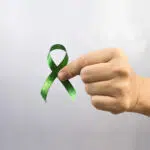National Minority Donor Awareness Week is observed from August 1 to August 7 every year to encourage multicultural donors. It also highlights the contribution of multicultural donors and their families and the diverse communities in critical need of organ donations. It was revealed in 2014 that 42% of those needing transplants in the U.S belonged to minorities, and at least 63,000 are waiting for kidney transplants. These worrisome statistics call for the instant action necessary to support minority donor awareness. It is essential to save millions of lives across the nation. This year, do what you can to spread the message and encourage minority donors to step forward
History of National Minority Donor Awareness Week
Organ donation is a scientific process involving the surgical removal of an organ or tissue from one person — the donor — and transplanting it into another person — the recipient. The individual who gives away their organ is known as an organ donor. All the process requires then is a matching blood type, organ size, and tissue type. As a consequence of increased disease across the world, the number of people requiring transplants has also increased. In turn, this has resulted in a long waiting list for several transplants, and many people die before they find a donor. Tragically, in the U.S, the amount of people on the waiting list comprises more minority communities. National Minority Donor Awareness Week was initiated to encourage multicultural individuals to become donors and to save the lives of people regardless of race.
While organ donation is commonplace in modern times, it took doctors centuries of experimentation to reach the stage we are at today. For example, there are myths and stories hailing from ancient Greek, Roman, and Chinese times that tell of animal transplants that were performed by gods and healers. In fact, in 800 B.C., Indian doctors began replacing skin from one part of the body to another to repair wounds and burns. In the 16th century, research went a step further and Italian surgeon Gasparo Tagliacozzi became known as the father of plastic surgery. He would reconstruct noses and ears using skin from the arms of patients. He also discovered that skin from different donors could be rejected by the recipient, causing the procedure to fail. By the 20th century, scientists began experimentation on organ transplants such as kidneys, livers, hearts, pancreas, intestines, and lungs.
National Minority Donor Awareness Week timeline
The first cornea transplants take place.
The first organ procurement organization (OPO) is established.
The Organ Donor Leave Act is formed and allows federal employees to receive paid leave.
The first successful partial face transplant is performed in France.
National Minority Donor Awareness Week FAQs
How old do I have to be to sign up as a donor?
All adults over 18 can sign up as organ donors. Underage people can sign up with the permission of a guardian.
Can I donate even if I have an illness?
Yes, organ donation is still possible. However, the final decision will be made by doctors after your death.
Can people of different races and ethnicities match each other?
Yes. Organs are not differentiated by race, ethnicity, or religion.
How to Observe National Minority Donor Awareness Week
Start a campaign
Spread awareness by starting a campaign of your own to make people realize the number of minority individuals that need transplants.
Sign up as an organ or tissue donor
Sign up as an organ or tissue donor and encourage your friends and family to sign up for the cause too.
Spread the facts
Go Facebook Live or hold a short webinar and convey the stats and facts regarding minority donors and the number of people that need help. Research the advantages of donorship and encourage others to participate.
5 Facts You Need To Know About Organ Transplants
Organ transplants in the U.S.
Around 85 transplants take place daily.
Deaths caused while waiting for transplants
21 patients die every day waiting for an organ donor.
Lives saved by a single organ donor
One donor can save 50 lives.
African Americans waiting for transplants
36,388 African Americans are waiting for a lifesaving transplant.
Minorities on the transplant waiting list
In the U.S., 58% of the people on the list are minorities
Why National Minority Donor Awareness Week is Important
It increases awareness about minority donors
The week is important since it spreads awareness regarding minorities in dire need of donors to survive.
It encourages people to become donors
Due to the information spread out across the country this week, many people are encouraged to become donors. Families who have lost a loved one who has donated feel comforted by the fact that they have helped someone else survive.
It serves as a motivation
The week reiterates the notion that one person’s death can be a source of life for others. There is a possibility that people who never thought of becoming donors will sign up and those who are reluctant are more likely to change their minds
National Minority Donor Awareness Week dates
| Year | Date | Day |
|---|---|---|
| 2025 | August 1–7 | Friday–Thursday |
| 2026 | August 1–7 | Saturday–Friday |
| 2027 | August 1–7 | Sunday–Saturday |
| 2028 | August 1–7 | Tuesday–Monday |
| 2029 | August 1–7 | Wednesday–Tuesday |




































































